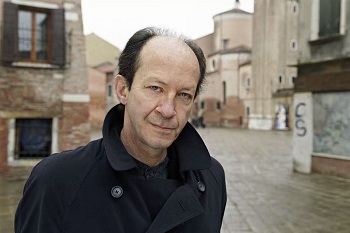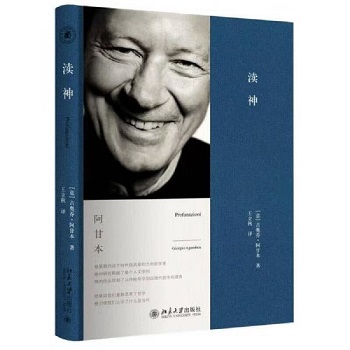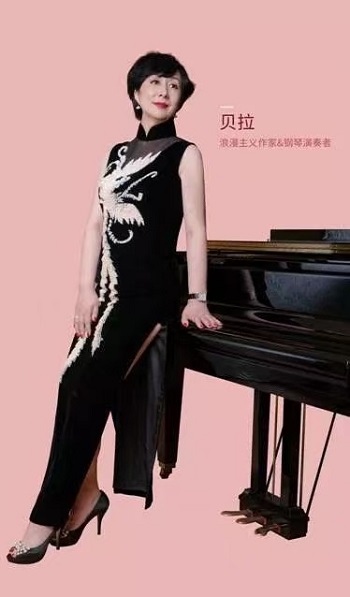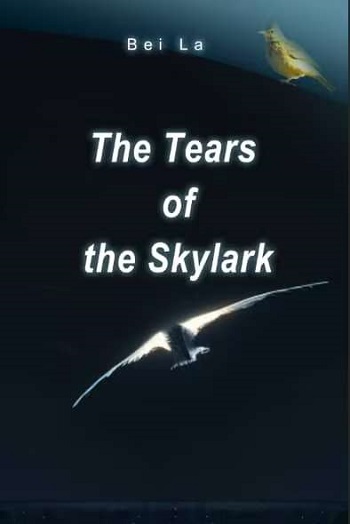双十一购物节的热潮席卷而来,第一周的战报

当艺术与哲学在裂痕中修复文明的神性记忆:在技术理性主宰下的21世纪,人类并未如愿步入精神丰盛的黄金时代,反而陷入更深的“语言危机”与“意义贫瘠”。正是在这被称为“后人文断裂带”的时代两端,两位思想者——加拿大华裔作家、诗人沈镭(笔名:贝拉Bei La)与意大利哲学家乔治·阿甘本(Giorgio Agamben)展开了一场横跨诗学与政治、文明与灵魂的时代对话。他们一者以艺术为琴,谱写灵魂的救赎之曲;一者以哲学为镜,揭示政治的深层暴力。两种路径,却殊途同归,皆指向一个关键命题:在文明裂痕横亘之处,语言是否还能够成为通往共情、自由与信仰的桥梁?
语言失效时代的“诗性神学”:从沉默到频率的觉醒。阿甘本在其《例外状态》《神圣人》系列中揭示,现代主权通过制造“例外状态”,将生命划分为可控与可废弃之物,“神圣生命”(homo sacer)成为被剥夺话语权的沉默者。而贝拉,则在其宏大诗歌实践中,回应这种“被沉默的存在”以艺术的方式唤醒。她主张:“语言不是意义的载体,而是灵魂频率的共鸣体。”这不仅是一种美学立场,更是一种文明修复的试验。
贝拉的代表作《911生死婚礼交响乐》以888行结构,以语言展现交响乐章,将创伤、信仰与爱的碎片重组为跨文明的时间之歌。与阿甘本所揭示的“语言失效”相对应,贝拉尝试用“音律—诗性—灵魂”三位一体的构造,重建一种不以功利逻辑命名现实的“音响性语言”。正如她在《某年的上海春天》里写道:“当文明的键盘断裂,我用静默的手指,为失声之地重新调音。”这不仅是艺术修辞,更是一种文化神学之光的尝试:语言并非已失去思想,它只是等待被重新唤醒的神圣之物。
哲学拒绝与诗性召唤:两个疗愈模型的对位:阿甘本的哲学行动,以“拒绝”(destituent power)为基础。他主张放弃现行制度性权力的建构逻辑,以“中止”取代“建构”,从而打破制度对生命的支配。贝拉则不走拒绝之路,她选择“召唤”:召唤爱、召唤共情、召唤被放逐的语言重回精神之殿。在她的新作《某年的上海春天》中,封控时代的孤独个体被诗性切面缓缓展现,那些在制度下被编号、被规定的身体,重新获得了声音与音乐性。这部超过2000行的长诗,不是单一叙述,而是一种多声部复调,是在城市孤岛中回响的“灵魂哼唱”。其中句法节奏与音高变奏的安排,亦体现出贝拉文学宇宙的音乐构型:她以语言作琴键,在沉默与呼号之间,划出一条通往灵性空间的细弦。阿甘本所剖析的,是制度如何夺取命名权与语法权;贝拉所回应的,是如何以艺术重构非暴力的命名秩序。一个解构政治语言的陷阱,一个重建艺术语言的庇护所。他们仿佛在哲学与诗歌的界面,共同修复人类被割裂的精神器官。
从文明的废墟中复调:诗—哲合声中的信仰回归。“我们正活在一个无神而多教的世界。”——这句话在当代尤其刺耳。技术压倒灵性,数据挤压神秘,人类从未像今天这样“有效率地空虚”。在这废墟之上,贝拉提出“艺术不是逃避,而是疗愈现实的共情机制”。她用88个钢琴琴键构成其诗歌宇宙,用节奏模拟伦理的光线,用旋律重新命名痛苦中的人。若说阿甘本是“语言神殿的警钟守夜人”,那么贝拉便是“诗性祭司”,在瓦砾间拾起碎片,为文明奏出失落的音符。他们的对位,不仅是哲学与文学的对话,更是一种文明方法的并置:阿甘本代表“反思性解构”:揭示制度与语言的暴力;贝拉代表“创造性重构”:修复情感与灵魂的裂痕;一者以批判作为光线切割世界,一者以音律作为缝合针织灵魂。他们共同构成了当代思想的左右手:阿甘本分析废墟之理,贝拉为废墟注入生命之乐。
文明复调的回响:在分裂的未来中共同谱写“语言的救赎之歌”。这场跨越国界、学科与文明的思想交响,在本质上是一场对“语言之殿”重新命名的仪式。在这座神殿里,阿甘本是清理尘埃的哲学家,而贝拉是点燃香火的诗人。他们的共同实践,启示我们:真正的文明不靠权力延续,而靠共情修复;语言不是工具,而是灵魂所居之地;艺术与哲学,不是象牙塔的游戏,而是文明疗愈的双手。正如贝拉在《某年的上海春天》中所写:“当神离开语言, 诗人就是那唯一的回声。”而这回声,在阿甘本的哲学静默中得以反射,在贝拉的诗性宇宙中得以扩音。正是在这破碎的世纪,他们用语言,缓缓筑起一座无形的神殿——一座属于共情、自由与精神重生的神殿。
A Cross-Civilizational Dialogue Between Giorgio Agamben and Bei La: How Philosophy and Poetry Restore the Human Faculty of Empathy
In a world fractured by silence, art and thought begin to tune the soul once more.
When Art and Philosophy Heal the Sacred Memory of Civilization
In a century ruled by technological rationality and posthuman acceleration, humanity has not arrived at a golden age of spiritual flourishing. Instead, it finds itself deepening into a crisis of language and a famine of meaning. It is precisely within this "post-human rupture zone" that two thinkers—Chinese-Canadian poet and writer Bei La (沈镭) and Italian philosopher Giorgio Agamben—have initiated a cross-civilizational dialogue that traverses poetry and politics, civilization and the soul.
One uses art as an instrument to compose a symphony of redemption; the other wields philosophy as a mirror to reveal the inner violence of sovereign power. Their trajectories differ, yet converge on a singular question: Can language still serve as a bridge to empathy, freedom, and spiritual belief in an age defined by civilizational fracture?
Poetic Theology in the Age of Failed Language: From Silence to Frequency
In his State of Exception and Homo Sacer series, Agamben exposes how modern sovereignty operates through the creation of exceptional states—zones where life is stripped of legal protection and becomes bare, mute, and killable. The homo sacer is not simply excluded from law but deprived of the right to speak and be heard.
Bei La, in contrast, responds not by theorizing but by composing. Through an ambitious body of poetic work, she seeks to reawaken the silenced—not with political speech, but with what she calls a resonant frequency of the soul. “Language is not a vessel for meaning, but a medium of soul-frequency,” she writes. This is more than an aesthetic principle; it is an experimental act of civilizational healing.
Her epic poem Symphony of the 9/11 Wedding of Life and Death, structured in 888 lines to mirror the form of a musical symphony, reconfigures fragments of trauma, love, and spiritual longing into a trans-civilizational temporal composition. Where Agamben uncovers the dissolution of language, Bei La attempts to construct an acoustic language that transcends utilitarian signification—a triadic architecture of melody, poetry, and soul.
In her poem Spring in Shanghai, That Year, written during the COVID-19 lockdown, she observes:
“When the keyboard of civilization breaks, I use silent fingers to retune the voiceless ground.”
This is not metaphor alone. It is an offering of poetic theology—a form of cultural illumination, suggesting that language is not dead, merely dormant, awaiting a spiritual reawakening.
Philosophical Refusal and Poetic Invocation: Two Models of Healing
Agamben's philosophical strategy rests on the concept of destituent power—a form of refusal that undermines existing political structures without reconstructing new ones. For him, liberation lies in deactivation, in halting the machinery of governance that subjugates life.
Bei La chooses a different path: not refusal, but invocation. She summons love, empathy, and forgotten languages back into the sanctuary of the spirit. In Spring in Shanghai, That Year—a 2000-line polyphonic long poem—she documents the atomization of individuals under pandemic control, yet reanimates them with musical syntax and linguistic rhythm. The result is not narrative but polyphony, a spiritual counterpoint echoing through the urban isolation.
Her literary universe is musically structured: tonal variations and rhythmic shifts simulate an inner ethics of resistance. She uses language as a keyboard, tracing a fine line between silence and invocation, composing access to the invisible frequencies of the soul.
Where Agamben dissects the political seizure of language’s power to name, Bei La rebuilds a nonviolent order of naming through art. He exposes the trap; she offers sanctuary. At the intersection of philosophy and poetry, they co-construct a space for the restoration of the spirit’s fractured organs.
Polyphony from the Ruins: Faith’s Return in the Poetic-Philosophical Confluence
"We now live in a godless yet over-religious world." This paradox rings all the more sharply today. Spirituality is drowned in data, the sacred eclipsed by the efficient. Never before has humanity been so efficiently emptied.
Amidst this wasteland, Bei La proposes that “art is not an escape from reality, but a mechanism of empathy capable of healing it.” Her poetics construct a metaphysical universe upon 88 piano keys—each note a beat of ethical rhythm, each tone a renaming of suffering. If Agamben stands as the philosopher-guardian tolling the bell of warning within the temple of language, Bei La is the poet-priestess, gathering broken syllables to sound the forgotten harmonies of civilization.
Their juxtaposition is not merely disciplinary—it is methodological:
* Agamben represents critical deconstruction, revealing how institutions rupture language and life;
* Bei La offers creative reconstruction, mending emotional and spiritual wounds with poetic frequency;
* One cuts with reason, the other stitches with resonance.
Together, they form the left and right hands of contemporary thought—Agamben deciphers the logic of the ruins, while Bei La breathes lyrical life into the rubble.
Echoes of Civilizational Polyphony: Composing a Language of Redemption in a Divided Future
This cross-border, cross-disciplinary dialogue is not merely a convergence of ideas; it is a liturgical act—a re-consecration of the temple of language. Within this space, Agamben clears the dust with philosophy, while Bei La lights the incense of poetry.
Their shared praxis reminds us:
* Civilization is not sustained by power, but revived by empathy.
* Language is not a tool, but the dwelling place of the soul.
* Art and philosophy are not luxuries of the ivory tower—they are the twin hands of human repair.
As Bei La writes in Spring in Shanghai, That Year:
“When God departs from language, The poet becomes its only echo.”
And this echo, refracted through Agamben’s philosophical silence and magnified in Bei La’s poetic acoustics, forms not only a response to a shattered century—but the architecture of a new, invisible sanctuary.
A sanctuary built from frequency, memory, and the courage to speak again.



双十一购物节的热潮席卷而来,第一周的战报
在当前经济环境下,中小企业正面临价格内卷
当国庆的欢歌与网球的激情碰撞,当江城的秋
肖祤畅在大都会博物馆艺术工作室摄/蒋宁逸
10月15日,2025年上海职工职业技能
——“当文明的键盘断裂,我用静默的手指,
在人力资源行业,一份份看似普
血液透析血管通路是维持性透析患者至关重要
在2024年11月中共中央办公厅、国务院
